South African Artist Kendell Geers Seeks to Undermine the Sanctity of the White Cube With A Visually Lavish New Show—See Images Here
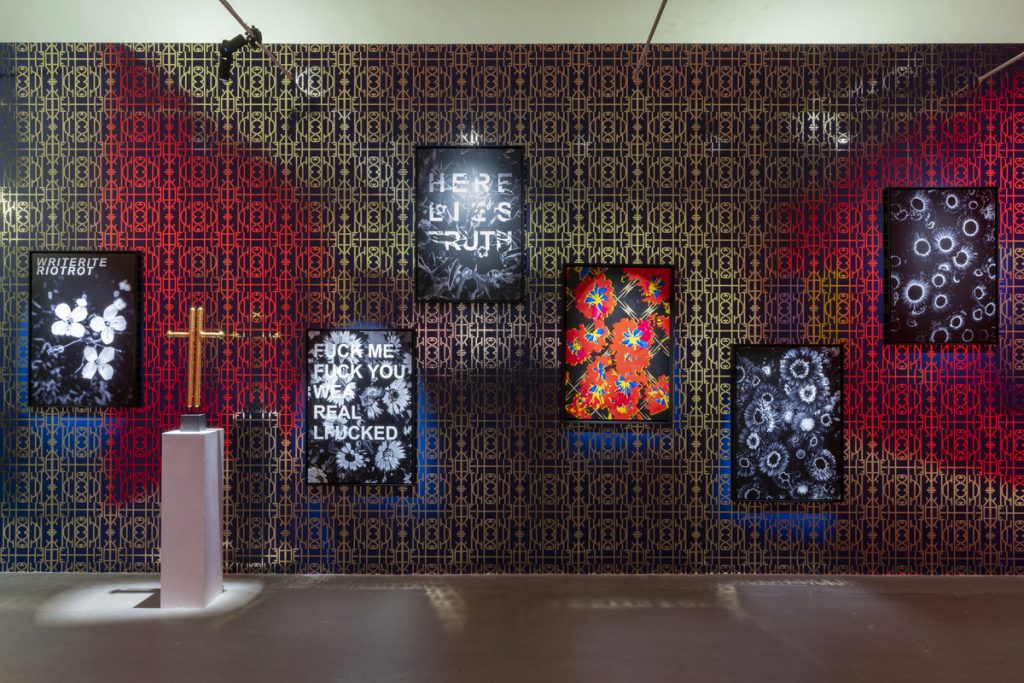

Artnet Gallery Network

Animist, activist, mystic, shaman, alchemist, punk, and poet are just some of the identities the South African artist Kendell Geers channels in his evocative new exhibition, “OrnAmenTum’EtKriMen,” at Milan’s M77 Gallery. Geers, who joined the struggle against apartheid while still quite young, views aesthetics and ethics as inextricably linked and has made a career of creating works aimed at disrupting ideology and orthodoxy with a spirit of contradiction. His works often simultaneously reference elements of poetry, politics, violence, nature, the spiritual, and the erotic.
In “OrnAmenTum’EtKriMen,” the provocative artist finds inspiration in Austrian architect Adolf Loos’s 1908 essay “Ornament and Crime.” The seminal essay condemned the use of unnecessary ornament in architecture as a useless—sometimes even dangerous—excess, and would steer the field of architecture towards the ideals of functionality and Minimalism that are still widely accepted today.
Geers, who is known for in-your-face works that range from performance art, video, sculpture, painting, and photography, here interrogates Loos’s cultural legacy in the Minimalist gallery white cube through dramatic and visually aggressive intervention. The exhibition brings together a selection of the artist’s older works along with new creations and site-specific installations which forcefully juxtapose different materials, impactful colors, and bold patterns with the aim of offending (and upending) viewers’ unquestioned ideas of good taste.
The effect can be both attractive and, yes, seemingly dangerous. The exhibition opens with Geers’s influential installation Hanging Piece (1993). Heavy clay bricks hang from the ceiling suspended on nooses made from red rope. The brick, an emblem of the Minimalist movement, becomes the artist’s gallows-humor punch line. In other areas of the gallery, neon signs blaze out words of warning, creating both a sense of hazard and of visual overload. The artist’s most recent works largely center around his almost Warholian photographs of flowers and plants, which are hung against site-specific wallpaper and wall painting.
The artist envisions the cut flowers as an invocation of nature in the age of climate crisis, rather than as merely decorative. “Their beauty lies in their fragility, still alive and yet dying simultaneously,” says the artist, who hopes the exhibition offers an impetus toward transformation, a leaving behind of what has been known.
See images from “OrnAmenTum’EtKriMen” below.
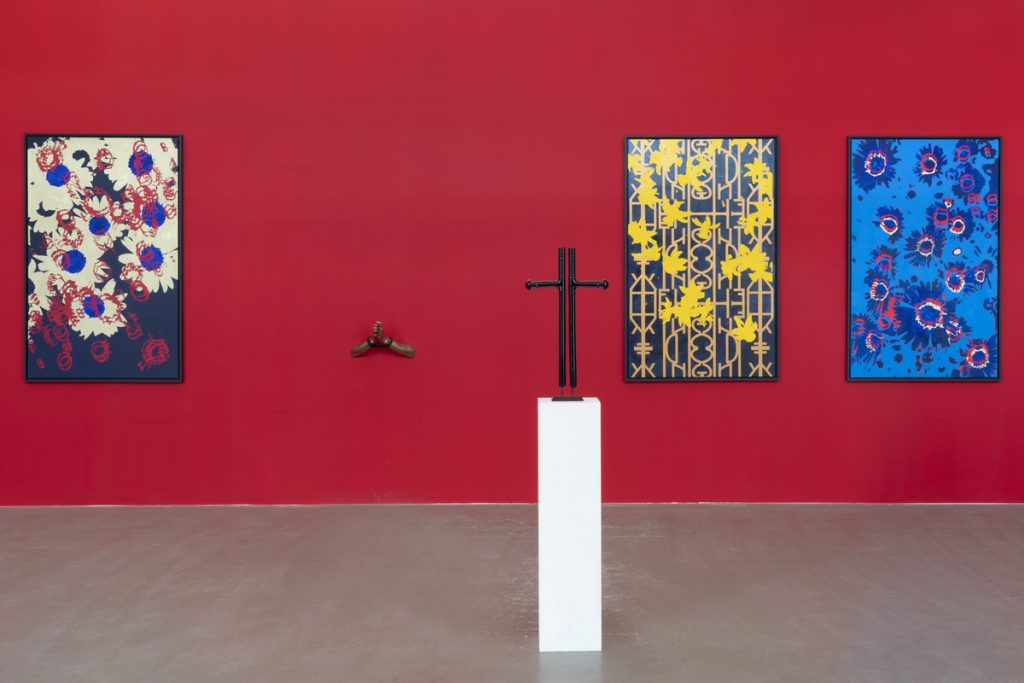
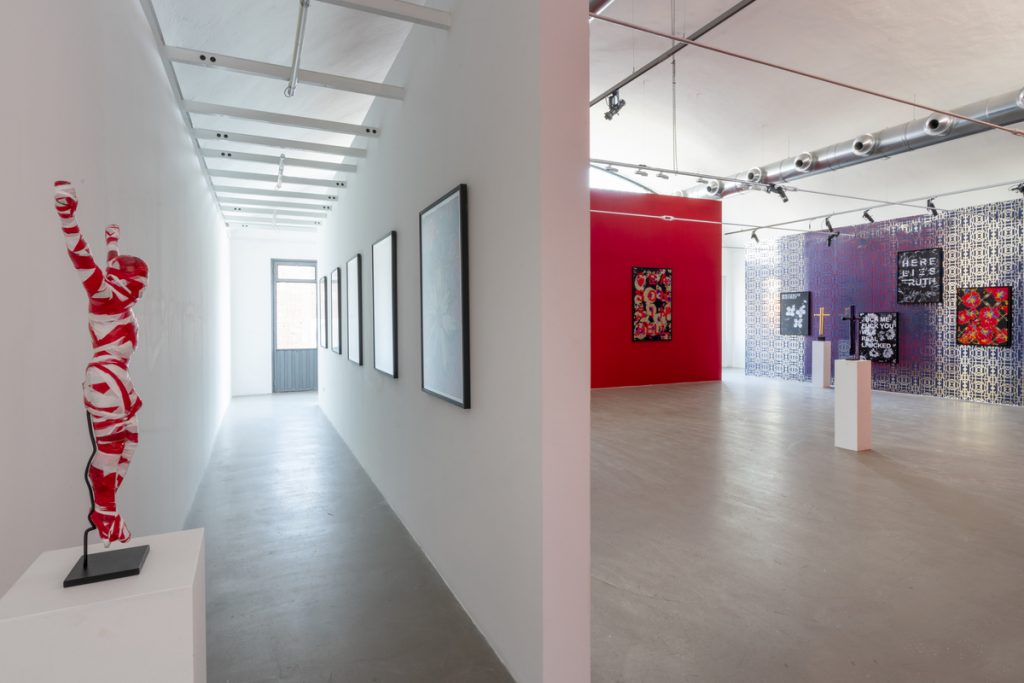
Installation view, “OrnAmenTum’EtKriMen,” 2020. Courtesy of M77 Gallery.
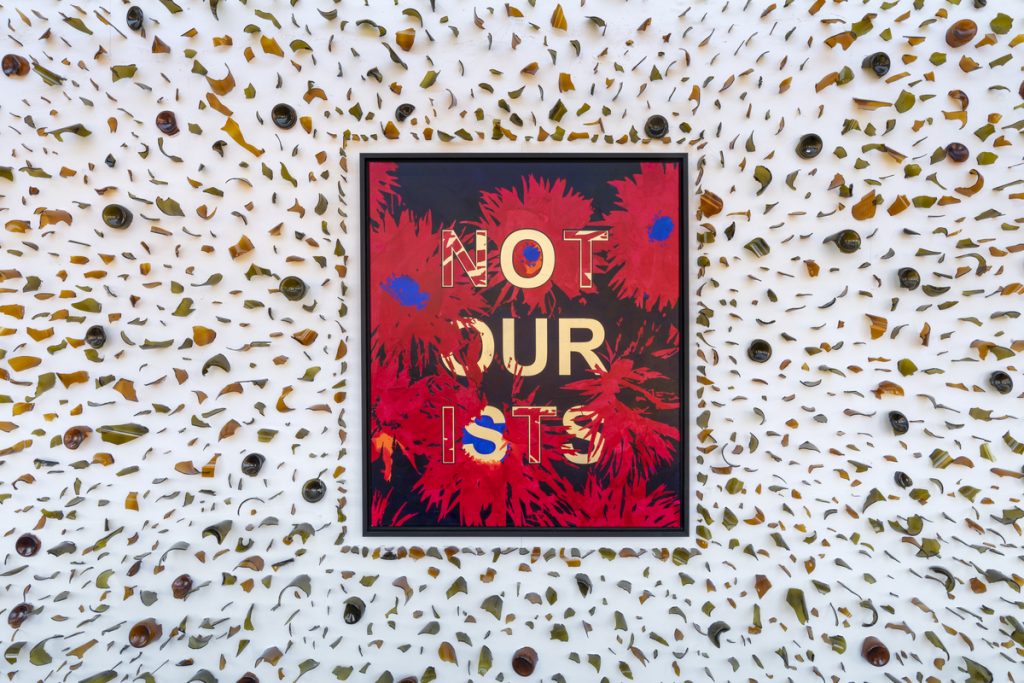
Installation view, “OrnAmenTum’EtKriMen,” 2020. Courtesy of M77 Gallery.
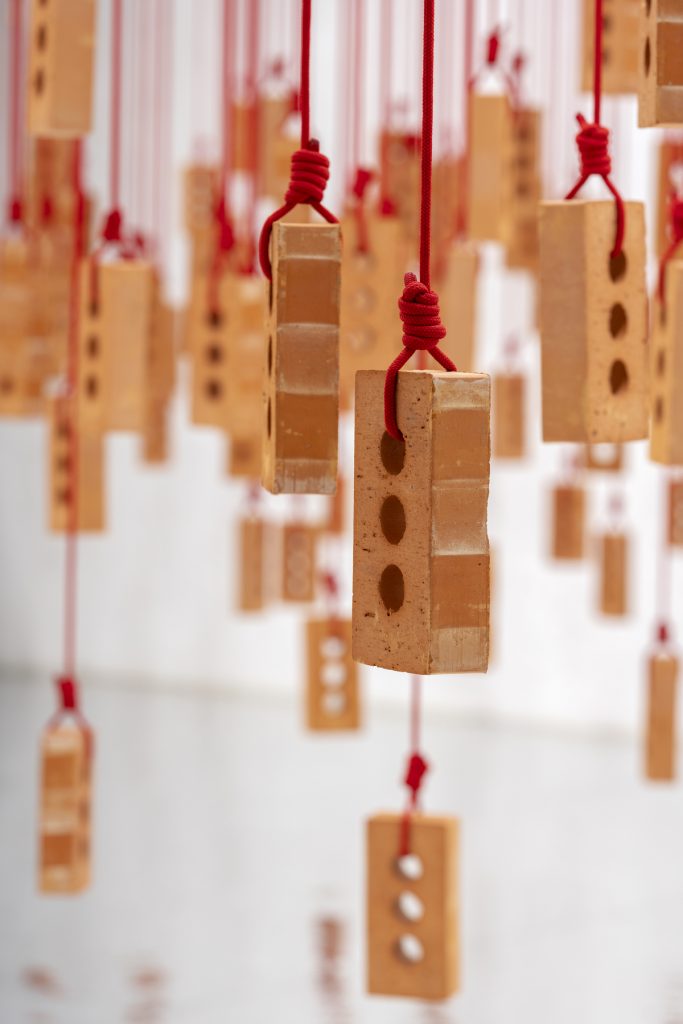
“OrnAmenTum’EtKriMen” is on view at M77 Gallery through January 30, 2021.